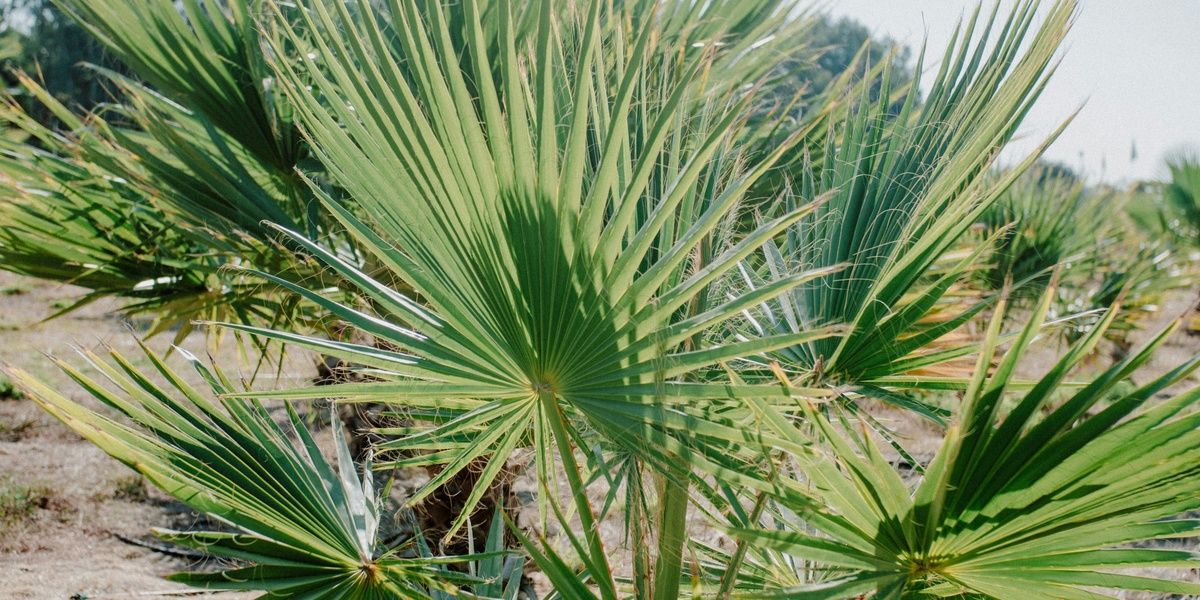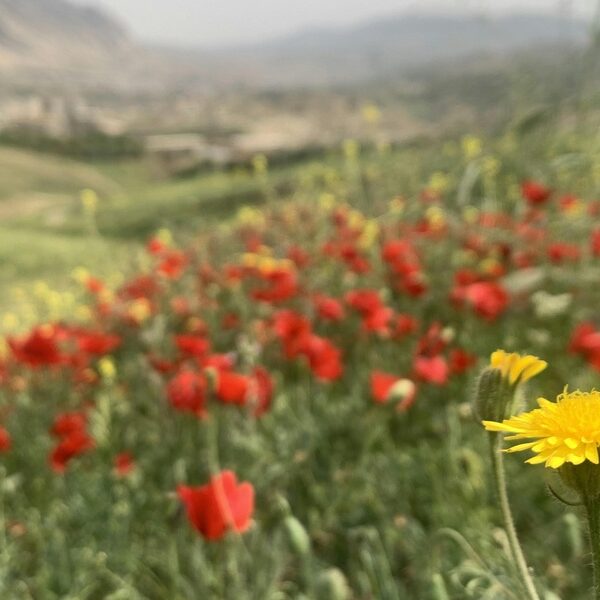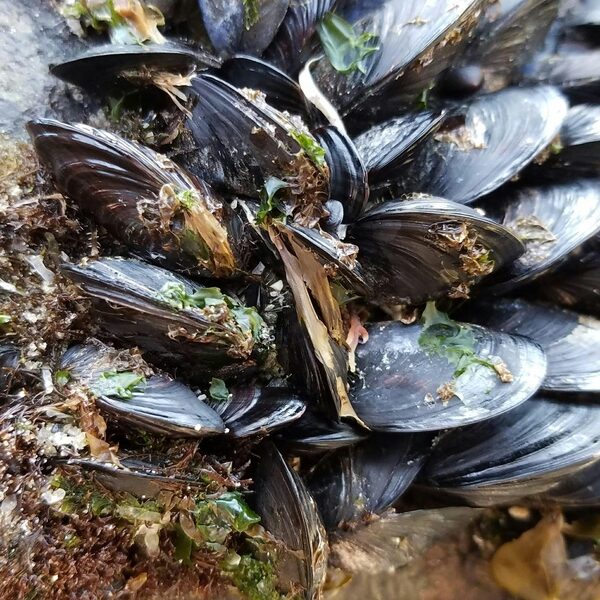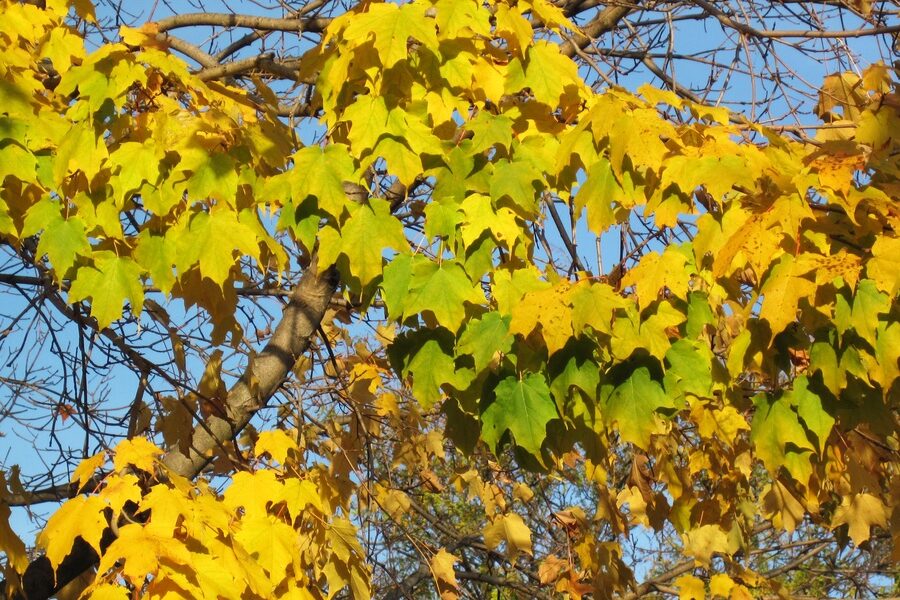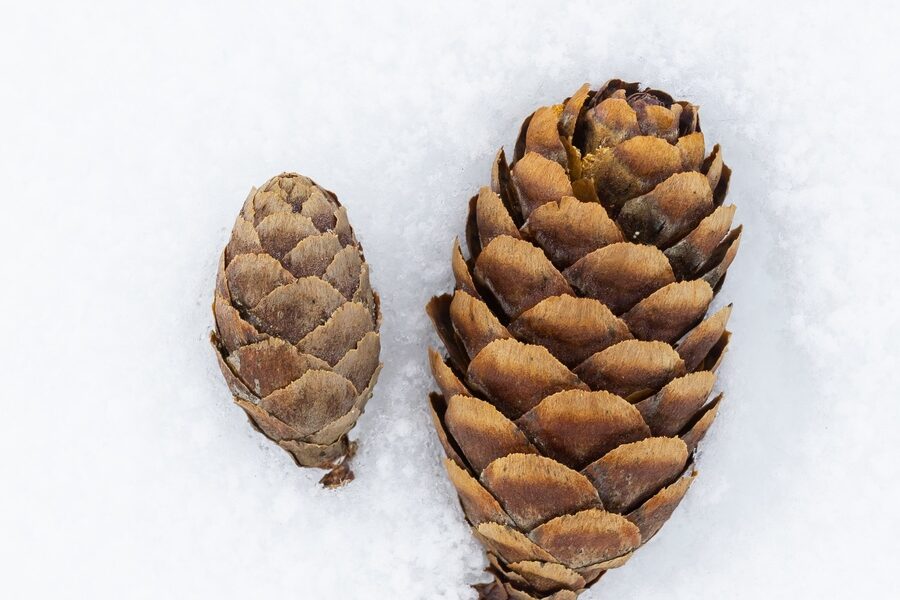Guinea-Bissau, a vibrant nation on West Africa’s coast, boasts a rich tapestry of ecosystems, from its mangrove-fringed shores to its savannah woodlands. This diverse landscape supports an incredible array of plant life, making it a fascinating subject for botanical exploration and study.
Delving into this botanical wealth, you’ll find below a detailed list of 40 Plants of Guinea-Bissau. Ranging from the sturdy African Copaiba Balsam to the tropical Wild Mango, this collection highlights some of the country’s significant flora. For each entry, you’ll find its Scientific Name, Growth Form, and typical Habitat to provide a comprehensive overview.
What types of plants are commonly found in Guinea-Bissau?
Guinea-Bissau’s varied climate and geography lead to a broad spectrum of plant types. You can expect to find resilient mangrove species along its extensive coastline and river estuaries, providing vital ecosystem services. Inland, the landscape transitions to savannahs and woodlands, home to numerous trees, shrubs, and grasses adapted to seasonal rainfall patterns, including economically important fruit trees and medicinal plants.
Why is a list of Guinea-Bissau’s plants important?
Compiling a list of plants from a specific region like Guinea-Bissau is crucial for several reasons. It serves as a foundational resource for biodiversity conservation efforts, helping researchers identify endemic, rare, or threatened species. Such a list also supports ecological studies, informs sustainable land management practices, and can be a valuable tool for educating local communities and international audiences about the natural heritage of the country.
Plants of Guinea-Bissau
| Common Name | Scientific Name | Growth Form | Habitat |
|---|---|---|---|
| Baobab | Adansonia digitata | Tree | Dry savanna woodlands and open plains |
| African Shea Tree | Vitellaria paradoxa | Tree | Dry savanna woodlands |
| African Locust Bean | Parkia biglobosa | Tree | Savanna woodlands and parklands |
| Red Mangrove | Rhizophora mangle | Tree | Coastal mangrove swamps and estuaries |
| African Oil Palm | Elaeis guineensis | Tree | Moist forests, riverbanks, and plantations |
| Kapok Tree | Ceiba pentandra | Tree | Gallery forests and savanna clearings |
| African Mahogany | Khaya senegalensis | Tree | Savanna woodlands and gallery forests |
| Tamarind | Tamarindus indica | Tree | Dry savanna and woodlands |
| African Fan Palm | Borassus aethiopum | Tree | Savanna, grasslands, and riverbanks |
| Cashew Tree | Anacardium occidentale | Tree | Coastal areas and savanna woodlands |
| Iroko | Milicia excelsa | Tree | Humid forests and gallery forests |
| African Rosewood | Pterocarpus erinaceus | Tree | Savanna woodlands |
| Néré | Parkia filicoidea | Tree | Gallery forests and moist savanna |
| Red Ironwood | Lophira lanceolata | Tree | Savanna woodlands |
| Saba Fruit | Saba senegalensis | Vine | Savanna woodlands and gallery forests |
| White Mangrove | Avicennia germinans | Tree | Coastal mangrove swamps |
| Black Mangrove | Laguncularia racemosa | Shrub/Tree | Coastal mangrove swamps |
| African Ebony | Diospyros mespiliformis | Tree | Savanna woodlands and riverine forests |
| Guinea Plum | Parinari excelsa | Tree | Gallery forests and humid woodlands |
| Bush Mango | Irvingia gabonensis | Tree | Moist forests |
| African Copaiba Balsam | Daniellia oliveri | Tree | Savanna woodlands |
| Kinkeliba | Combretum micranthum | Shrub | Dry savanna and bushland |
| Gamba Grass | Andropogon gayanus | Grass | Savanna and grasslands |
| Rubber Vine | Landolphia heudelotii | Vine | Forests and savanna edges |
| Drumstick Tree | Cassia sieberiana | Tree | Savanna woodlands |
| Velvet Tamarind | Dialium guineense | Tree | Forests and savanna woodlands |
| Frankincense Tree | Boswellia dalzielii | Tree | Dry, rocky savanna hillsides |
| Candle Bush | Senna alata | Shrub | Disturbed areas, riverbanks, and clearings |
| Sickle Bush | Dichrostachys cinerea | Shrub/Tree | Dry savanna and scrublands |
| Wild Custard Apple | Annona senegalensis | Shrub/Tree | Savanna woodlands |
| Rhun Palm | Raphia sudanica | Tree | Swampy areas and riverbanks |
| Desert Date | Balanites aegyptiaca | Tree | Dry savanna and semi-arid zones |
| African Myrrh | Commiphora africana | Shrub/Tree | Dry savanna and rocky areas |
| Bitter Kola | Garcinia kola | Tree | Moist forests |
| Calabash Nutmeg | Monodora myristica | Tree | Gallery forests and humid woodlands |
| Kola Nut Tree | Cola nitida | Tree | Moest forests |
| Silk Cotton Tree | Bombax costatum | Tree | Dry forests and savanna |
| Wild Mango | Cordyla africana | Tree | Riverine forests and savanna woodlands |
| Balsam Apple | Momordica balsamina | Vine | Disturbed areas and bushland |
| Fever Plant | Ocimum gratissimum | Shrub | Humid areas and near settlements |
Images and Descriptions
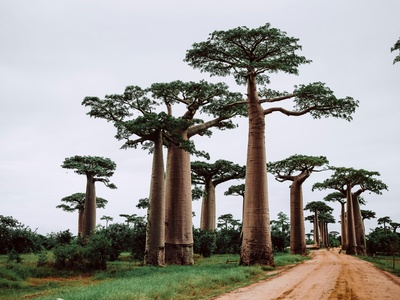
Baobab
A massive, iconic tree with a bottle-shaped trunk that stores water. Known as the “Tree of Life,” its fruit, leaves, and bark are used for food and medicine, and it can live for over 1,500 years.
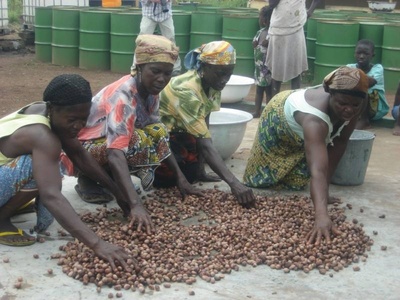
African Shea Tree
This tree produces a fruit with a nut that is the source of shea butter, a valuable ingredient in cosmetics and food. It is a protected species in many areas due to its economic and cultural importance.
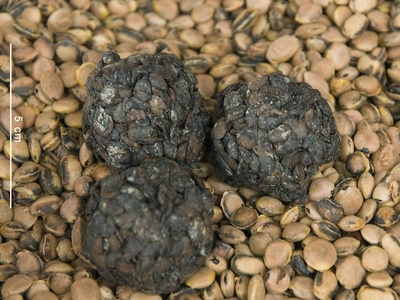
African Locust Bean
Known for its long pods containing a sweet pulp and valuable seeds. The seeds are fermented to make a pungent food condiment called “dawadawa,” a staple flavoring in West African cuisine.
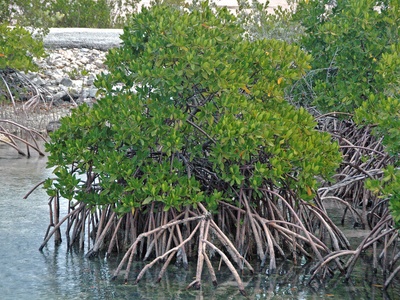
Red Mangrove
Easily identified by its tangled, reddish prop roots that arch above the water. These roots create a vital nursery habitat for fish and protect the coastline from erosion by trapping sediment.
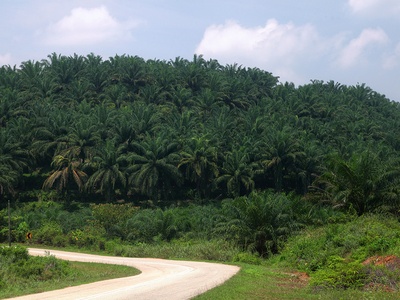
African Oil Palm
A quintessential West African palm, this tree is the source of palm oil and palm kernel oil from its fruit. It is a cornerstone of local economies and cuisines, with almost every part of the plant having a use.
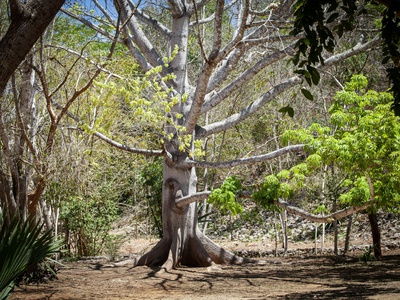
Kapok Tree
A towering tree with a spiny trunk and wide buttress roots. Its pods contain a silky, cotton-like fiber called kapok, which is buoyant and water-resistant, historically used for stuffing pillows and life preservers.
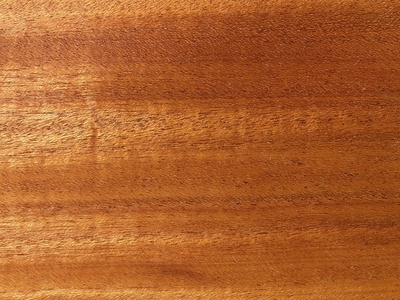
African Mahogany
A large, deciduous tree prized for its high-quality, reddish-brown timber used in furniture and construction. Its bitter bark is also widely used in traditional medicine to treat fevers and other ailments.
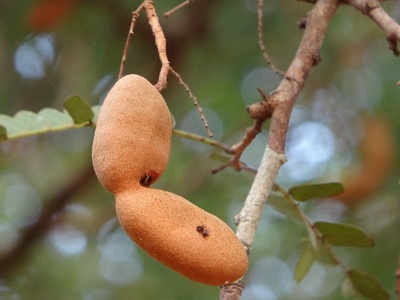
Tamarind
This long-lived tree produces pod-like fruits with a tart, tangy pulp. The pulp is a key ingredient in cuisines worldwide and is used in drinks, sauces, and traditional remedies for its laxative properties.
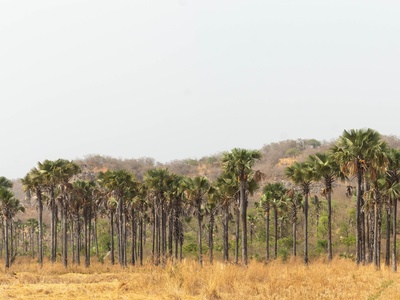
African Fan Palm
A tall, robust palm with a distinct bulge in its trunk. It provides a variety of resources, including durable timber, thatching materials from its leaves, and a sweet sap that is fermented into palm wine.
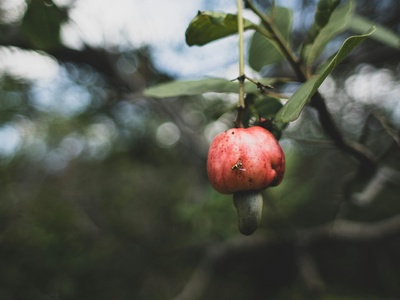
Cashew Tree
Though native to Brazil, it is widely naturalized and economically vital in Guinea-Bissau. It is famous for its cashew nut, which grows attached to the bottom of a fleshy, sweet fruit called the cashew apple.
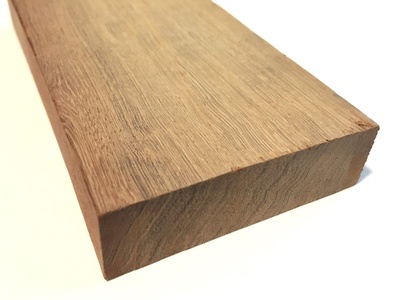
Iroko
A large hardwood tree often called African Teak due to its durable, high-quality timber. It is highly valued for construction, boat building, and furniture, and is considered sacred by some cultures.
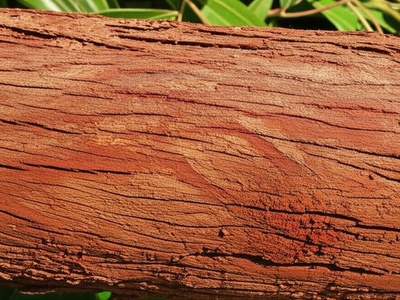
African Rosewood
A medium-sized tree known for its dense, reddish wood used for making furniture, drums, and charcoal. It also produces a red sap, known as kino, which has medicinal and dyeing applications.
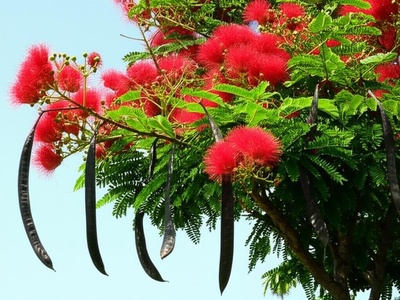
Néré
Similar to its savanna cousin, Parkia biglobosa, this tree produces long pods with seeds that are fermented into a food condiment. Its bright red, ball-like flowers are a distinctive sight.

Red Ironwood
A tree characterized by its very hard, heavy, and durable wood, making it resistant to termites and decay. It is used for heavy construction, bridges, and railway ties. Its leaves are noticeably long and narrow.
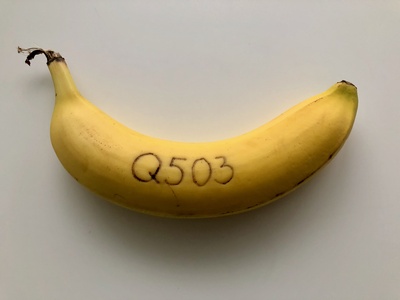
Saba Fruit
A woody climbing vine that produces large, round yellow fruits with a tangy, sweet pulp. The fruit, often called “liane saba,” is a popular wild-harvested food and is rich in Vitamin C.
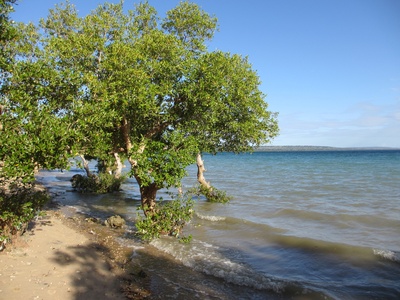
White Mangrove
This mangrove species is distinguished by its unique, finger-like vertical roots called pneumatophores that stick up from the mud to help the tree breathe. It is often found in the higher intertidal zones.
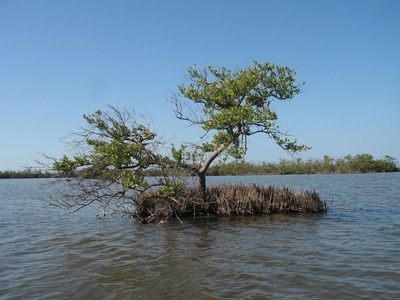
Black Mangrove
Typically smaller than other mangroves, it grows in the upper tidal zones. It is recognized by two salt-excreting glands at the base of each leaf, helping it thrive in saline environments.

African Ebony
A large evergreen tree that can live for centuries. It produces a dense, dark heartwood, though not always perfectly black. Its sweet, yellow-orange fruit is edible and enjoyed by both humans and wildlife.
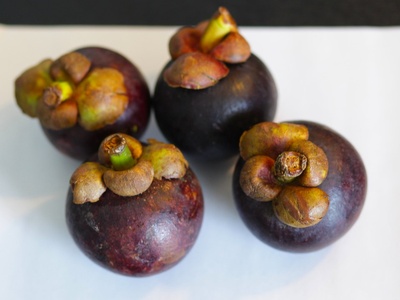
Guinea Plum
A tall evergreen tree with a dense crown, producing a small, plum-like fruit. The fruit has a sweet, fibrous pulp and is an important food source for local communities and wildlife.
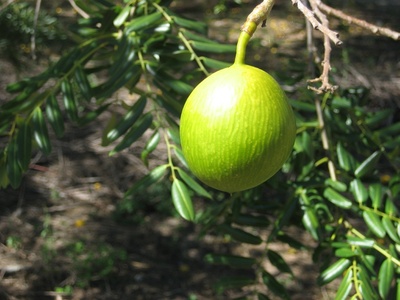
Bush Mango
This tree produces a fruit similar to a mango, but it is most valued for its seed, or “ogbono nut”. The nuts are ground to create a powerful thickening agent used in traditional West African soups and stews.
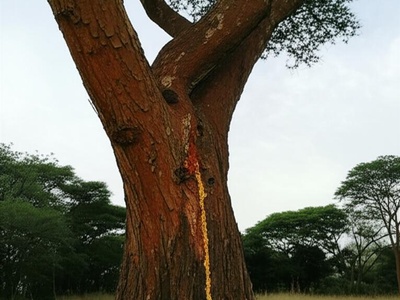
African Copaiba Balsam
Known for its fragrant oleo-resin, or balsam, which is tapped from the trunk. The resin is used traditionally as an incense, a varnish, and for medicinal purposes. The wood is light and used for general carpentry.
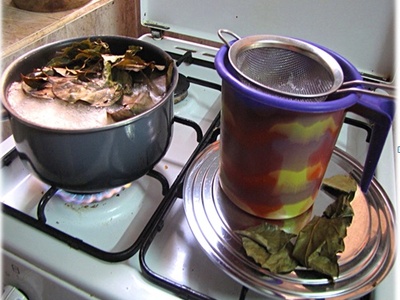
Kinkeliba
A hardy shrub whose leaves are widely used to make a popular medicinal tea called kinkeliba. It is consumed for its diuretic, detoxifying, and digestive health benefits across West Africa.
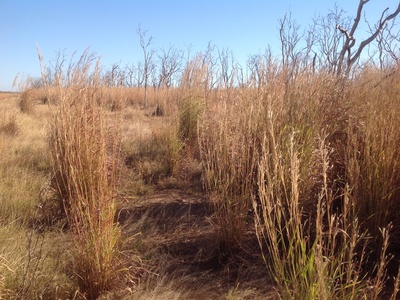
Gamba Grass
A tall, robust perennial grass that forms large tussocks. While it is an important forage for livestock, it is also highly flammable and can contribute to the intensity of seasonal bush fires.
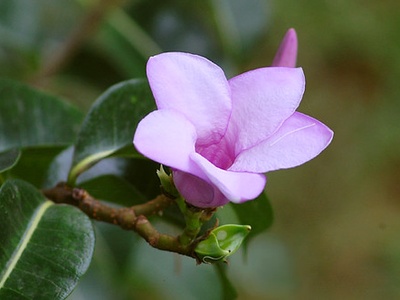
Rubber Vine
A large, woody vine that was historically a source of natural rubber. It produces edible, orange-sized fruits with a sweet-sour taste, and its strong stems are used for making ropes.
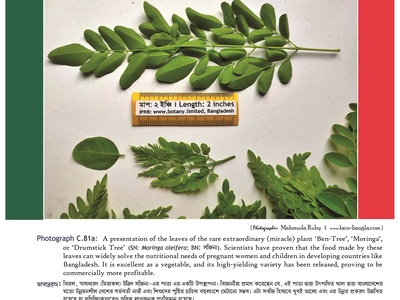
Drumstick Tree
A small to medium-sized tree that produces very long, dark, cylindrical seed pods that resemble drumsticks. The roots and pods are used extensively in traditional medicine for their laxative and anti-inflammatory properties.
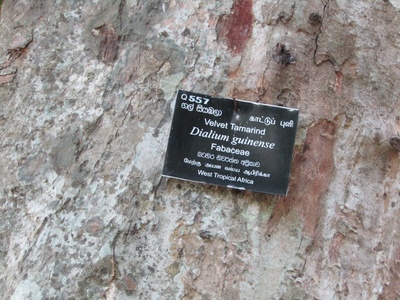
Velvet Tamarind
This tree produces small, black, velvety pods containing a sweet, orange-colored pulp that tastes like tamarind candy. The pulp is a popular snack, especially for children, and is rich in Vitamin C.
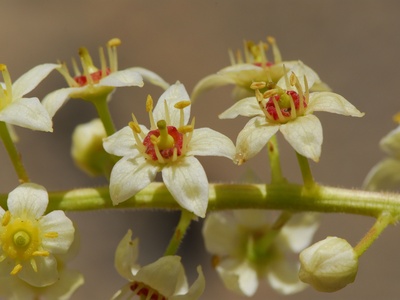
Frankincense Tree
This tree produces a fragrant resin, known as African frankincense, when its bark is cut. The resin is used locally as incense for ceremonies and as a traditional medicine for respiratory issues.
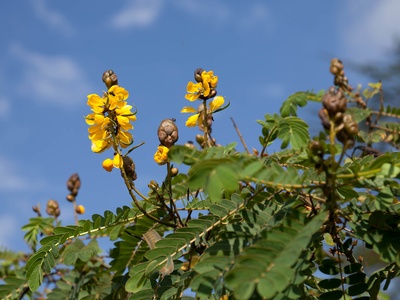
Candle Bush
A striking shrub with large leaves and tall, erect flower spikes that look like yellow candles. It is widely known for its potent antifungal properties, with leaf extracts used to treat skin diseases.
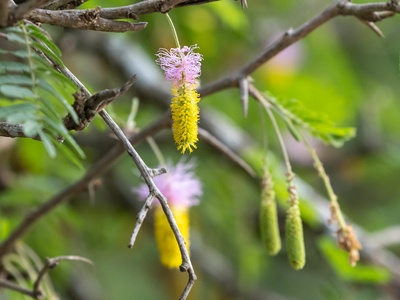
Sickle Bush
A spiny, resilient shrub or small tree easily identified by its unique, bi-colored puffball flowers that are half pink and half yellow. Its seed pods are twisted and form dense clusters.
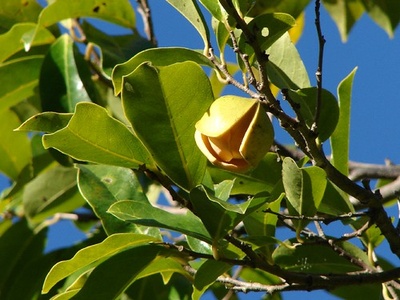
Wild Custard Apple
A small, deciduous tree that produces an aromatic, fleshy fruit with a flavor resembling custard or pineapple. The fruit is eaten fresh, and various parts of the plant are used in traditional medicine.
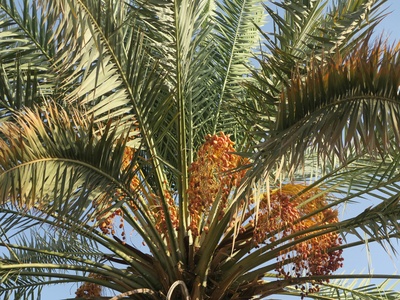
Rhun Palm
A species of Raphia palm known for its extremely long fronds, among the longest in the plant kingdom. The fronds are a vital resource for thatching, weaving mats and baskets, and building materials.
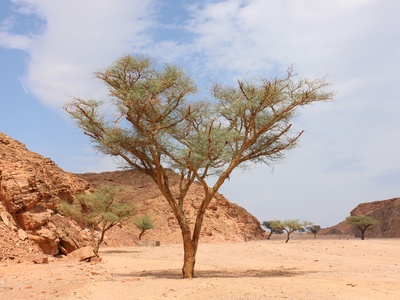
Desert Date
A spiny, evergreen tree that is extremely drought-resistant. It produces a bittersweet, edible fruit, and a valuable oil, known as “betu oil,” is extracted from its seeds for cooking and medicinal use.

African Myrrh
A small, spiny tree that exudes a fragrant, medicinal resin called bdellium or African myrrh. The resin is used as an incense, a perfume, and a traditional remedy for wounds and infections.
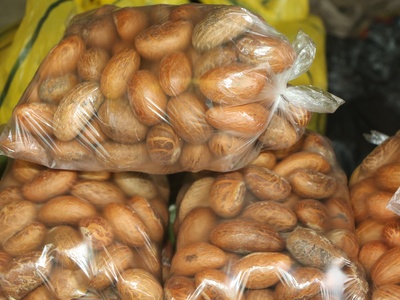
Bitter Kola
An evergreen tree valued for its seeds, known as bitter kola nuts. The nuts are chewed as a stimulant and are believed to have numerous medicinal benefits, including acting as an antimicrobial agent.
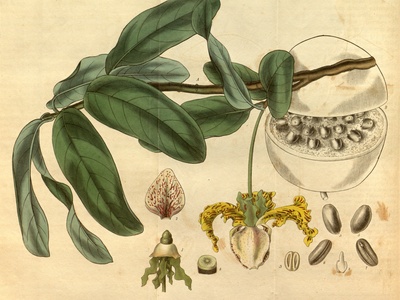
Calabash Nutmeg
A tree that produces large, spherical fruits containing aromatic seeds that smell and taste like nutmeg. The seeds are ground and used as a popular spice in West African cooking, especially in stews and soups.
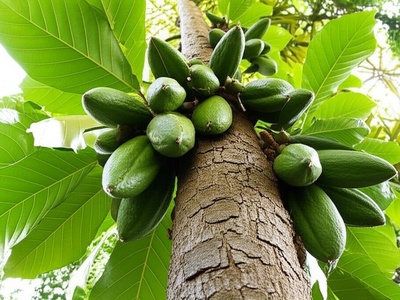
Kola Nut Tree
The source of the kola nut, which contains caffeine and is a cultural staple in West Africa. The nuts are chewed as a stimulant, offered to guests as a sign of hospitality, and used in traditional ceremonies.
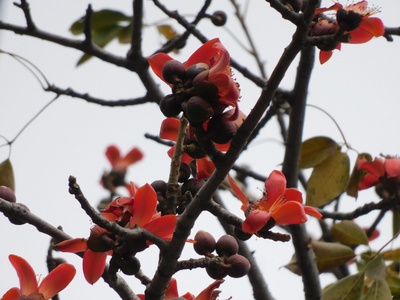
Silk Cotton Tree
A deciduous tree with a thorny trunk, known for its beautiful, large red flowers that appear when the tree is leafless. Its pods contain a cotton-like fiber similar to kapok.
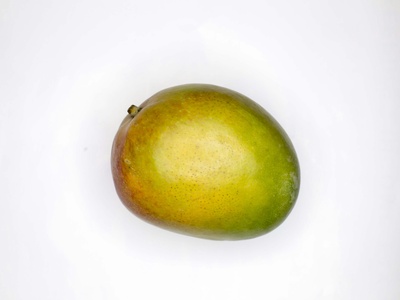
Wild Mango
This large, deciduous tree produces round, yellow fruits with a fleshy pulp that has a strong, mango-like aroma. The fruit is a favorite food for elephants, monkeys, and local people.
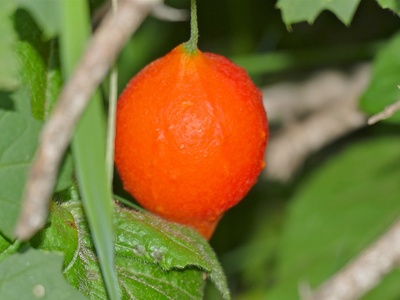
Balsam Apple
A slender, climbing vine with warty, orange-red fruits that burst open when ripe to reveal seeds coated in a bright red, sticky pulp. Though related to bitter melon, its leaves and young fruits are cooked as a vegetable.

Fever Plant
An aromatic shrub also known as African basil or scent leaf. Its leaves have a strong, clove-like scent and are widely used as a culinary herb and for making a medicinal tea to treat fevers, colds, and digestive issues.
